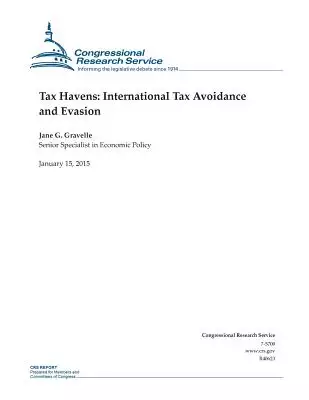Target Dividend的問題,透過圖書和論文來找解法和答案更準確安心。 我們找到下列股價、配息、目標價等股票新聞資訊
Target Dividend的問題,我們搜遍了碩博士論文和台灣出版的書籍,推薦RobertF.Bruner,KennethM.Eades,MichaelJ.Schill寫的 Case Studies in Finance: Managing for Corporate Value Creation 8e 和Gravelle, Jane G.的 Tax Havens: International Tax Avoidance and Evasion都 可以從中找到所需的評價。
這兩本書分別來自華泰文化 和所出版 。
健行科技大學 財務金融系碩士班 葉寶文所指導 鍾政穎的 收益率和本益比對股價預測之實證 (2021),提出Target Dividend關鍵因素是什麼,來自於收益率、本益比、股價報酬率、多元迴歸模型、兩階段樣本選擇模型。
而第二篇論文國立高雄大學 金融管理學系碩士班 黃旭輝所指導 趙承庭的 審計委員會的設置是否會提升公司偏低的負債比率? (2021),提出因為有 審計委員會、資本結構、公司治理、成長機會的重點而找出了 Target Dividend的解答。
Case Studies in Finance: Managing for Corporate Value Creation 8e

為了解決Target Dividend 的問題,作者RobertF.Bruner,KennethM.Eades,MichaelJ.Schill 這樣論述:
1. The cases link managerial decisions to capital markets and investor expectations. At the core of most is a valuation task that requires students to look to financial markets to resolve the problem. 2. These cases feature a wide range of contemporary and relevant problems, including
examples in real and financial options, agency conflicts, financial innovation, investing in emerging markets, and corporate control. They also cover classic topics in Finance, including dividend policy, the mix of debt and equity financing , the estimation of future financial requirement, and the
choice between mutually exclusive investments. 3.All of the cases are set in the year2006 or after and 25% are set in 2015 or later. A substantial proportion (57%) of the cases and technical notes are new, or significantly update. The mix of cases reflects the global business environment.
收益率和本益比對股價預測之實證
為了解決Target Dividend 的問題,作者鍾政穎 這樣論述:
本研究想了解本益比與收益率對於股票收盤價及股價報酬率是否具有顯著的預測能力,故選取元大高股息ETF(0056)中的傳產類股、科技類股或金融類股共計30檔股票之股價報酬率作為主要的研究標的,選取個股之單月營收成長率、每股淨值、單月營收成長率大於0、符合本益小於15等指標作為解釋變數。資料來源為經濟新報資料庫,資料樣本之期間為2015年11月至2020年11月,共計5年,資料型態為月資料,共計1830筆。研究方法則採用相關係數法、多元迴歸模型及兩階段樣本選擇模型分析股價報酬率與本益比和收益率之間的關係,並以配適度檢定證明本研究所採用的方法具有解釋上的有效性與一致性。實證結果證明本益比對股價於落後
三期時具有顯著的解釋效果,而單月營收成長率對股價在當期即有顯著的解釋效果。
Tax Havens: International Tax Avoidance and Evasion

為了解決Target Dividend 的問題,作者Gravelle, Jane G. 這樣論述:
Addressing tax evasion and avoidance through use of tax havens has been the subject of a number of proposals in Congress and by the President. Actions by the Organization for Economic Cooperation and Development (OECD) and the G-20 industrialized nations also have addressed this issue. In the 111th
Congress, the HIRE Act (P.L. 111-147) included several anti-evasion provisions, and P.L. 111-226 included foreign tax credit provisions directed at perceived abuses by U.S. multinationals. Numerous legislative proposals to address both individual tax evasion and corporate tax avoidance have been adv
anced. Multinational firms can artificially shift profits from high-tax to low-tax jurisdictions using a variety of techniques, such as shifting debt to high-tax jurisdictions. Because tax on the income of foreign subsidiaries (except for certain passive income) is deferred until income is repatriat
ed (paid to the U.S. parent as a dividend), this income can avoid current U.S. taxes, perhaps indefinitely. The taxation of passive income (called Subpart F income) has been reduced, perhaps significantly, through the use of hybrid entities that are treated differently in different jurisdictions. Th
e use of hybrid entities was greatly expanded by a new regulation (termed check-the-box) introduced in the late 1990s that had unintended consequences for foreign firms. In addition, earnings from income that is taxed often can be shielded by foreign tax credits on other income. On average, very lit
tle tax is paid on the foreign source income of U.S. firms. Ample evidence of a significant amount of profit shifting exists, but the revenue cost estimates vary substantially. Evidence also indicates a significant increase in corporate profit shifting over the past several years. Recent estimates s
uggest losses that may approach, or even exceed, $100 billion per year. Individuals can evade taxes on passive income, such as interest, dividends, and capital gains, by not reporting income earned abroad. In addition, because interest paid to foreign recipients is not taxed, individuals can evade t
axes on U.S. source income by setting up shell corporations and trusts in foreign haven countries to channel funds into foreign jurisdictions. There is no general third-party reporting of income as is the case for ordinary passive income earned domestically; the Internal Revenue Service (IRS) relies
on qualified intermediaries (QIs). In the past, these institutions certified nationality without revealing the beneficial owners. Estimates of the cost of individual evasion have ranged from $40 billion to $70 billion. The Foreign Account Tax Compliance Act (FATCA; included in the HIRE Act, P.L. 11
1-147) introduced required information reporting by foreign financial intermediaries and withholding of tax if information is not provided. These provisions became effective only recently, and their consequences are not yet known. Most provisions to address profit shifting by multinational firms wou
ld involve changing the tax law: repealing or limiting deferral, limiting the ability of the foreign tax credit to offset income, addressing check-the-box, or even formula apportionment. President Obama's proposals include a proposal to disallow overall deductions and foreign tax credits for deferre
d income, along with a number of other restrictions. Changes in the law or anti-abuse provisions have also been introduced in broader tax reform proposals. Provisions to address individual evasion include increased information reporting and provisions to increase enforcement, such as shifting the bu
rden of proof to the taxpayer, increased penalties, and increased resources. Individual tax evasion is the main target of the HIRE Act, the proposed Stop Tax Haven Abuse Act, and some other proposals.
審計委員會的設置是否會提升公司偏低的負債比率?
為了解決Target Dividend 的問題,作者趙承庭 這樣論述:
本研究主要探討公司在設置審計委員會後對公司偏低的負債比率是否會有提升的影響。過去從未有文獻探討公司在設置審計委員會後對於公司資本結構的影響,因此本文主要探討公司資本結構是否會因為審計委員會的設置產生不同的影響,並進一步加入公司治理、審計委員會成員以及成長機會變數加以探討。實證結果發現:整體樣本顯示公司在設置審計委員會後,大多數公司顯著提升公司偏低的負債比率。除此之外,董事會持股比率高以及控制股東持股比率高的公司在設置審計委員會後顯著提升較多的負債比率;董事長身兼總經理的公司大致比董事長未身兼總經理的公司增加較多的負債比率;審計委員會成員中沒有女性委員比有女性委員大致增加較多的負債比率;審計委
員會成員中不具有女性財務專家委員才會對公司偏低的負債比率顯著的提升;成長機會高或低的公司在設置審計委員會後皆會提升其原先偏低的負債比率。